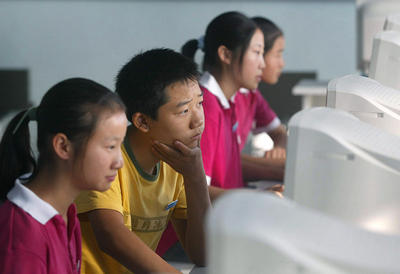Traditionally, Chinese people have been highly appreciative of the role of education in development. This tradition was strengthened by the introduction of the One-Child Policy which took effect in the late 1970s. Parents usually have huge expectations for their only child and are often willing to sacrifice whatever they can afford to give their child the best opportunities for educational success. Educational expenses comprise a large and increasing proportion of income expenditure for households. For example, parents in most cities spent at least one third of their household income on their children’s education, and, in some cities, the proportion can account for half of household income. In addition to school-related expenditures, after-school extra curriculum activities, such as piano, maths, dancing, and English lessons, represent an increasing proportion of family education expenditure.
The national obsession with education is also reflected in government policy. At the very beginning of the period of economic reform, Deng Xiaoping viewed education as the foundation for the ‘Four Modernisations’: modern agriculture, industry, national defence, and science and technology. In 1983 he proposed ‘Three Orientations’ for the Chinese education system — ‘education must be oriented to modernisation, to the world, and to the future’. In the same year, the Central Committee of the Chinese Communist Party and the State Council promulgated the Outline of Education Reform and Development in China, stressing ‘a strong nation lies in its education and a strong education system lies in its teachers’.
Later, in 1997, the 15th National Congress of the Communist Party decided that the national development strategy would be based on science and education. In 2004, the State Council issued The Action Plan for Invigorating Education 2003 to 2007, which placed education as the top strategic priority for the development of a modern China. According to the National Statistics Bureau of China (2012), the Chinese government has substantially increased the level of investment in education since 2006 (from 5,161 billion Yuan (2.82 per cent of GDP) in 2005 to 20,772 (4 per cent of GDP) billion Yuan in 2012). More recently, in 2010, the Ministry of Education enacted the Outline of China’s National Plan for Medium and Long-term Education Reform and Development (2010-2020), which was aimed at transforming China into a leading knowledge- and technology-based country.
The Chinese education system follows the 6–3–3–3/4 model (6-year primary school, 3-year junior middle school, 3-year senior middle school/vocational school, and either 2- or 3-year college or 4-year university). Attending 9 years of schooling (6-year primary school and 3-year junior middle school) is obligatory for all children under the Compulsory Education Law (1986, 2006). Students in the compulsory education stage usually go to schools within their household registration system. Once finishing primary school education, students usually go on to a junior middle school. However, after junior middle school, students undertake a high school entrance examination (zhongkao), competing for limited places in key senior middle schools, which are almost the only route to key universities.
Career progression for teachers in China happens on a competitive basis, pushing principals and teachers to work hard to achieve better performance. Highly performing principals and teachers are more likely to be promoted and better rewarded. For those not performing well, their chances of career progression are limited. Moreover, the adoption of performance-based pay means that under-achievers not only lose face but also receive less pay. Quite often, student test results are the most critical, if not the only, indicator of teachers’ and students’ performance. As such, teachers and students work extremely hard to improve their test results.
The emphasis on tests has led to Chinese students ranking among the best globally on test results. For example, in the Program for International Student Assessment organised by the OECD every three years, Chinese students from Shanghai in 2009 achieved the best results in mathematics, science and reading. Similar results were achieved in 2012.
Nevertheless, the focus on student test results, which require students to memorise, regurgitate information and follow instructions, has resulted in a lack of critical thinking, creativeness and problem-solving ability among students. This deficiency has been a considerable concern for the Chinese government which aims to build a sustainable and prosperous society based on education and science. Consequently, more radical educational reforms have been conducted following the launch of the Outline of China’s National Plan for Medium and Long-term Education Reform and Development (2010–2020).
The development of the education system has allowed for the training of more professionals and skilled workers to meet the needs of the changing economy. The supply of this educated workforce has also helped boost growth. Education in China is not only big business for public and private investors: it is the key to China’s economic dynamism.
Eva Huang was a teacher in China and has recently completed her PhD on the Chinese education system at the University of South Australia.
John Benson is Professor of Management at the University of South Australia.
Professor Ying Zhu is Director of the Australian Centre for Asian Business at the University of South Australia.

